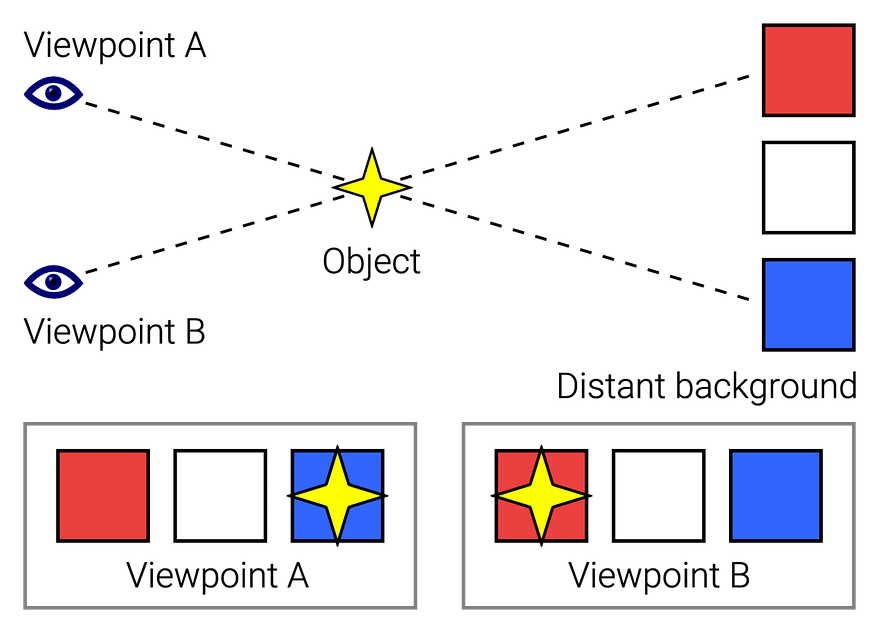
When we are presented with an object, we must have two skills to recognize it: sustained gaze and shift of gaze. Sustained gaze means a certain amount of time is needed for processing to occur or the item will not be remembered or recognized. Shift of gaze is also crucial for a full understanding. In order to form a complete picture of a new item, we shift our gaze from one part to the next, focusing on each one long enough for the brain to process and put the parts together as a whole. This process enables us to add the object to our brain’s library of known visual objects. When recognition occurs, it is because the item we are looking at is compared to this library of visual memory. Building this visual library starts at birth and is how we visually understand what’s around us. Since shifting gaze around all the elements of an object is necessary to understand it as a whole, visual recognition problems are inevitable when shift of gaze does not take place. To most of us, this is a natural, automatic eye movement. But it can present difficulty for those with CVI. Everything we see is compared to our visual library for recognition to occur, so if the child does not have shift of gaze and sustained gaze skills, their library will be significantly reduced, leading to their not having the information stored to recognize the object (Parent Partnerships Webinar). Even if the visual library is there, the item still may not be matched and recognized if shift of gaze does not occur.
In school, instructional videos can go by too fast for recognition to occur leaving the student behind. Learning tools like diagrams, manipulatives, pictures in workbooks, and dozens of other classroom materials from a ruler to the homework in-tray can pose a challenge to the brain’s recognition system. They can also have trouble distinguishing between certain letters when reading either from the board or on their own work. Not only does limited visual recognition impede learning, but it can cause strain, exhaustion, frustration, and even anxiety for the child. Recognition is active work that can be draining, especially when presented with many new stimuli at once such as in a new environment that is also busy and noisy. Misrecognition can also occur when the student sees only part of an object. For example, they may walk up to something tall and cylindrical believing it is a trash receptacle when it is really something else entirely (Brady, 2021). This can be frustrating but also socially embarrassing if it happens in front of other people. Even though my visual impairment is ocular, I experienced this and similar mishaps when growing up in school and it always made me cringe.
Not getting the full visual picture can also affect wayfinding. Children may use a specific landmark to identify an area but not process the full scene to notice environmental changes. For example, a child might recognize their driveway by the white mailbox. If another house nearby also has a white mailbox, or there is suddenly something else white of a similar shape in the area, they may turn into the wrong driveway because they are focusing in on that one detail to find their way rather than taking in the full scene (Brady, 2021).
Visual tasks that are automatic to most of us must be taught directly. Exercises to help these children learn to visually attend and shift their gaze around to the various parts of an object can boost their recognition skills. For visual attention, work on students being able to focus on lighted objects such as toys, lamps, or screens. Then move onto shiny or reflective surfaced items. Next, work on focusing with single-colored objects. After that, the student should practice attending to moving objects in their environment. Have them comment on activity such as people moving around, fountains, fish swimming in their tanks, rain running down the gutter, kites in the sky, or bubbles. Once the student is able to focus on these things, have them try pictures or books with very little visual clutter (Willings, 2019). For shift of gaze exercises, offer three objects placed near each other and have the student scan between all three before choosing one. Colored cards can also be used, The goal is for the student to practice shifting their gaze purposefully from one item to the next without loosing focus (Willings, 2019).
References
Brady, K. (2021, March 31). Exploring memory and misrecognition in children with CVI (part 1). Pediatric Cortical Visual Impairment Society. Retrieved February 14, 2022, from https://pcvis.vision/exploring-memory-and-misrecognition-in-children-with-cvi-part-1/
Willings, C. (2019, June 9). Attend, shift gaze & pursuit for students who are blind or visually impaired. Teaching Students with Visual Impairments. Retrieved February 14, 2022, from https://www.teachingvisuallyimpaired.com/visual-attend-and-scan-activities.html
